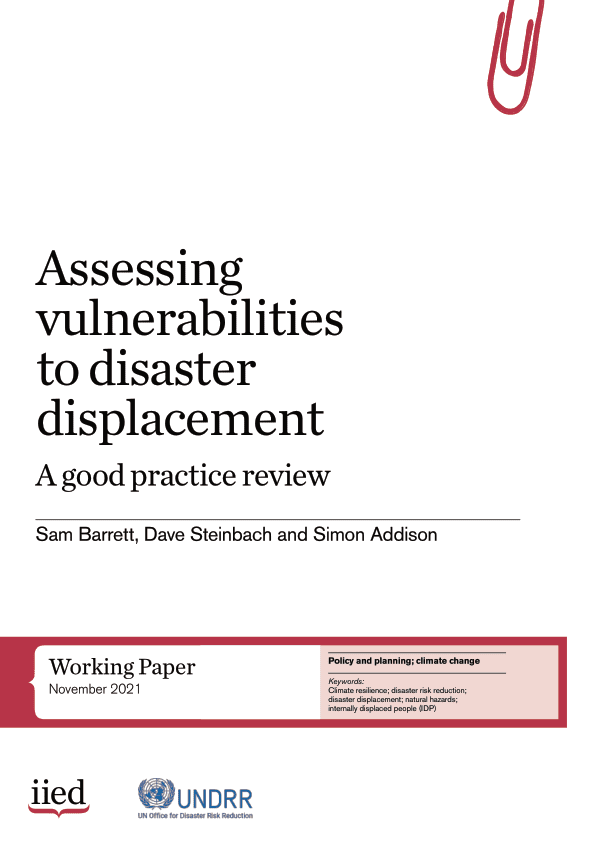Summary
Predictive models have great potential for forecasting population displacements from climatic and other disasters. But disaster displacement risk assessment approaches often use probabilistic models and big data analysis to make global-level predictions, which have limited utility for planning and delivering local interventions that address vulnerable people’s specific needs. This paper reviews current practice for analysing and assessing disaster displacement risks and presents recommendations on how to effectively integrate a detailed vulnerability analysis to improve operational decision making.
Context
As global heating increases, disasters become more frequent and intense, with devastating consequences for vulnerable households and communities, especially in the poorest countries. In the past decade, humaninduced or weather-related disasters have displaced hundreds of millions of people. This number will only increase as the frequency and intensity of disasters escalate.
The United Nations Office for Disaster Risk Reduction (UNDRR) works to reduce disaster losses and stop underlying risks impacting people, households, communities and service provision. In the Horn of Africa, it supports governments to strengthen disaster risk reduction (DRR) management systems, catalyse investment and integrate risk information into decision making; it also helps DRR stakeholders develop robust and accurate disaster displacement risk assessments to improve preventative action and rapid response.
The UNDRR’s 2019 guidelines for reducing risk, addressing impacts and strengthening resilience in disaster displacement emphasise the need to prioritise social vulnerability data and analysis. Stakeholder consultations in the Horn of Africa in 2021 revealed nuance around displacement risk assessment generation and use in policy and operational decision making, focusing on the need to improve effective targeting of vulnerable groups by integrating robust and locally specific data on vulnerability, resilience, adaptive capacity and coping strategies into displacement risk assessments.
Approach and objectives
Building on this work, this good practice review aims to:
-
Review the tools and methods DRR stakeholders use to assess displacement risk and analyse the extent to which they integrate granular data on vulnerability, resilience and adaptive capacity;
-
Describe tools, approaches, methodologies and databases used by the climate risk management (CRM) community of practice that capture robust data on vulnerability, resilience and adaptive capacity; and
-
Recommend how DRR stakeholders can better integrate vulnerability and resilience into disaster displacement risk assessments and decision making.
Focusing on probabilistic modelling approaches, big data approaches, system dynamics models, risk indices and agent-based models in the Horn of Africa, we analyse whether, to what extent and how they integrate social vulnerability and resilience data. We describe each approach, outline its principal objectives and discuss its strengths and weaknesses in terms of accuracy and usability.


